Preserved Apple Cores — Yes, It’s A Thing
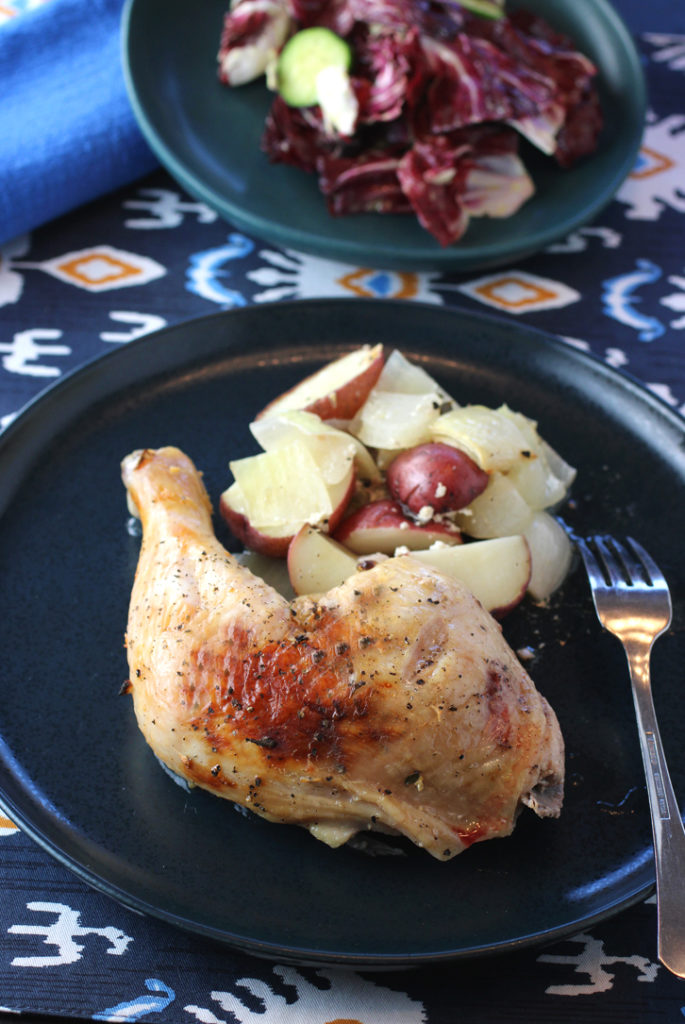
Admittedly, I love all things Danish — the timeless architecture, the clean-lined furniture, and the haunting murder-mystery thrillers.
And of course, the food.
So, when a review copy of “Nordic Family Kitchen” (Prestel, 2021) landed on my porch, I found myself beyond intrigued.
The book is by Mikkel Karstad, a Danish chef who cooked for years at world-renowned Noma in Copenhagen.
The book features 73 recipes that espouse Karstad’s eco-conscious sensibilities that prize foraged, home-grown and good-for-you ingredients in dishes such as “Seaweed Flatbread with Sea Salt, Herbs, Flowers, and Olive Oil,” “Elderflower Lemonade with Herbs,” “Pickled Chanterelles with Spruce, Apple, and Shallots,” and “Rhubarb and Marzipan Cake.”
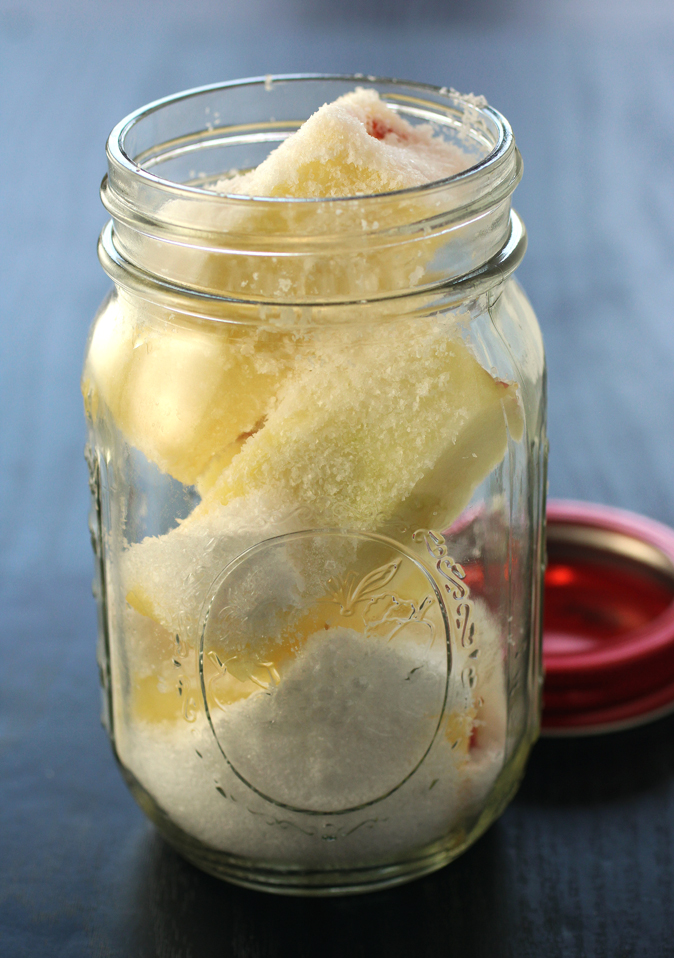
Now, I’ve salt-preserved lemons for years. But apple cores?
That was a new one on me.
I was curious about what they would be like, as well as excited to be able to upcycle something I’d normally toss in the trash.
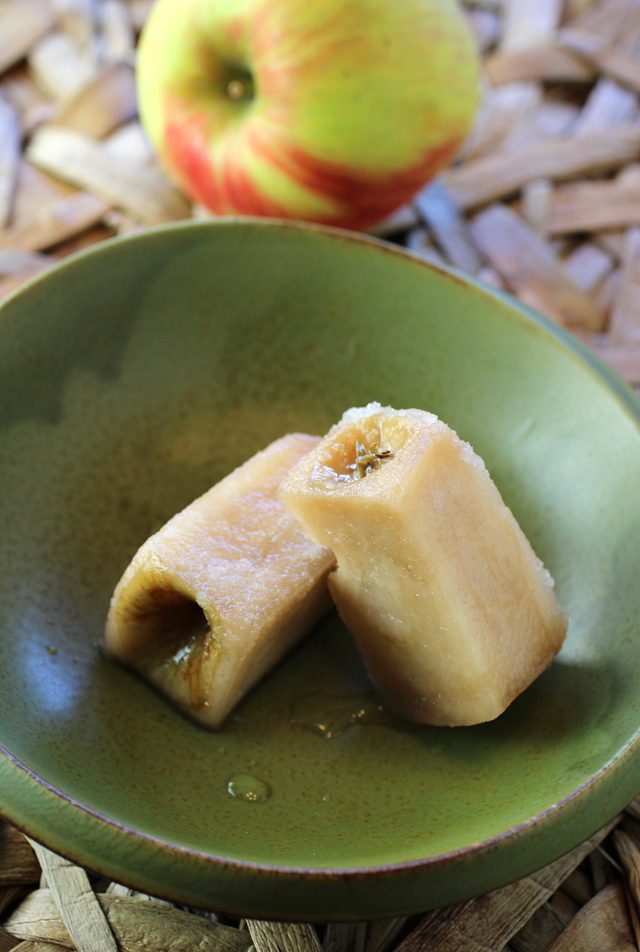
“Preserved Apple Cores” are indeed made much the same way as traditional preserved lemons. All it takes is a few apple cores, salt, and time. The recipe below calls for 15 to 20 apple cores, but really, you can make as few or as many as you like. Just place them in a clean glass jar and shower them liberally with salt — and wait.
The recipe indicates you can just leave your covered jar of apple cores on the counter for however long as you like. I kept mine out for a month, then stored in the fridge, until I used them for the first time five months later.
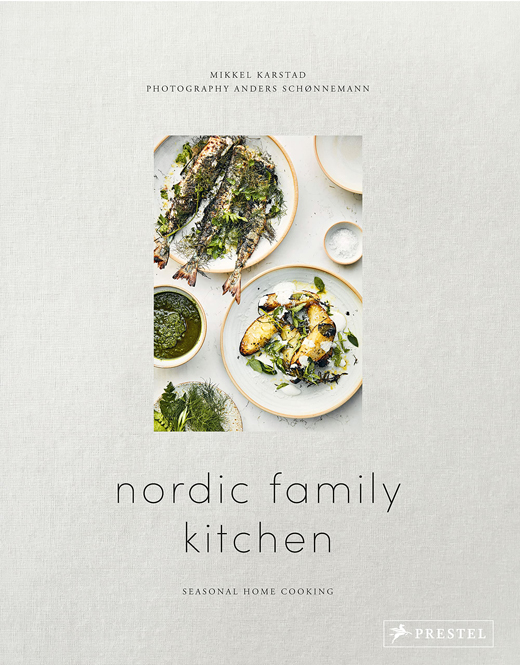
So, how to use your preserved apple cores? Pretty much any way you would use preserved lemons — chopped up finely into salad dressings, salads or pork or chicken dishes. They will have softened, and while still fruity tasting, their bright zing will have mellowed and taken on a pinch of savoriness. Just discard the stem and any seeds before proceeding.
Karstad’s “Whole Roast Chicken with Buttermilk, Preserved Apples and Lemons, Potatoes, Onions and Green Salad” is an ideal way to get started, as it makes use of both the preserved apple cores and preserved lemons.
Spatchcock a chicken and marinate in buttermilk mixed with the chopped preserved apple cores and lemon, which will tenderize it so that you’ll barely need a knife to eat it when cooked.
Place onions and potatoes on the bottom of a roasting pan before laying the chicken overtop, and pouring in the buttermilk marinade. The recipe instructed to cook the chicken at 340 degrees. That seemed low to me, and after allowing it to bake at that temperature for about 20 minutes, I decided to turn up the heat to 365 degrees. Even if it didn’t specify, I’m guessing the 340 degrees is for a convection oven, which I don’t have. So I did the conversion, adding 25 degrees to account for my conventional oven. That’s why I advise to cook the chicken entirely at 365 degrees instead.
As the chicken cooks, a tangy aroma will permeate your kitchen, akin to yogurt.
When done, you end up with chicken that is as juicy and tender as if it had been stewed. It’s delicate and homey tasting. Even with salt-preserved lemons and apples in the mix, the chicken in no way tastes overly salty. I wouldn’t say you taste the preserved apples much in the chicken. Surprisingly, the apple taste comes through most on the onions, giving them an even sweeter taste.
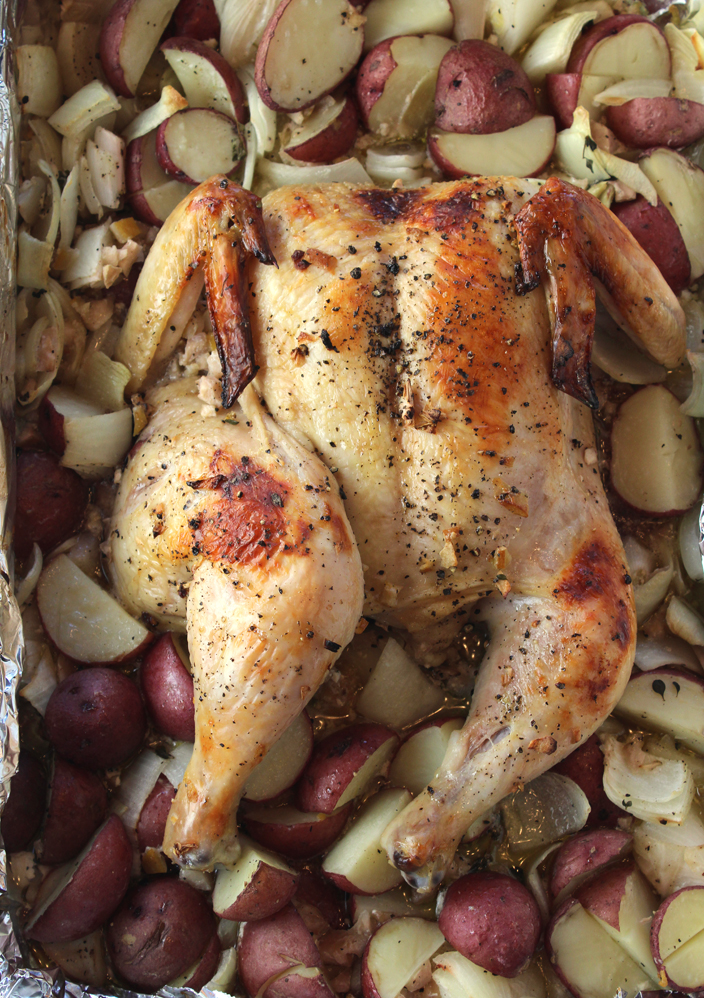
The recipe says to serve the chicken with bread and a romaine salad. I used radicchio instead because I liked the slightly bitter counter punch.
So, the next time you polish off an apple, think twice before tossing that core.
Whole Roast Chicken with Buttermilk, Preserved Apples, Lemon, Potatoes, Onions and Green Salad
(Serves 4 to 6)
1 free-range chicken (3 1/2 pounds)
2 cups buttermilk
2 preserved apple cores (see Recipe below)
1/2 preserved lemon (homemade or store-bought)
Salt and freshly ground pepper
4 onions
2 pounds small potatoes
5 sprigs thyme
3 tablespoons olive oil
Romaine lettuce
Extra-virgin olive oil and vinegar or lemon juice for the lettuce
Check the chicken for feature stumps and cut out the backbone so that the chicken can lie completely flat. Lightly score the thighs and transfer the chicken to a large bowl. Pour the buttermilk over the chicken. Chop the preserved apple cores and lemon into small pieces and add to the chicken. Season with salt and freshly ground pepper and combine everything together well. Leave the chicken to marinate for 45 to 60 minutes.
Heat the oven to 340 degrees F (convection) or 365 degrees F (conventional). Peel and roughly chop the onions. Put them in the bottom of a large ovenproof dish. Wash and halve (or quarter if on the larger size) the potatoes, then add them to the dish. Season with chopped thyme, salt and freshly ground pepper and mix everything well. Place the chicken on top, pouring the left-over buttermilk marinade over it, and drizzle with olive oil. Season with some extra salt and freshly ground pepper.
Roast the chicken in the oven for 50 to 70 minutes. Turn off the heat and let the chicken rest in the closed oven for 10 minutes. Remove chicken from the oven. It should be beautifully golden with a crispy skin, and the onions and potatoes should be tender.
Cut the lettuce coarsely and rinse in cold water. Let it dry thoroughly.
Carve the chicken and serve with the vegetables and gravy from the dish; the lettuce suitably dressed with olive oil, vinegar or lemon juice, and salt and pepper; and good bread.
Preserved Apple Cores
15 to 20 apple cores
18 ounces coarse salt
Put the apple cores in a jar and cover with the salt. Close the lid and shake the jar until all the cores are covered with salt.
Leave the jar on your kitchen worktop or on a shelf for at least 3 weeks before using. In fact, the apple cores may be left for 5 to 6 months — the longer the better.
Use them as an alternative to preserved lemon in dressings, as a stuffing for whole grilled fish or as a marinade for roast chicken.
Adapted from “Nordic Family Kitchen” by Mikkel Karstad
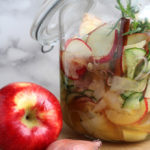
Another Fun Way to Preserve Apples: Quick Bread-and-Butter Apple Pickles
